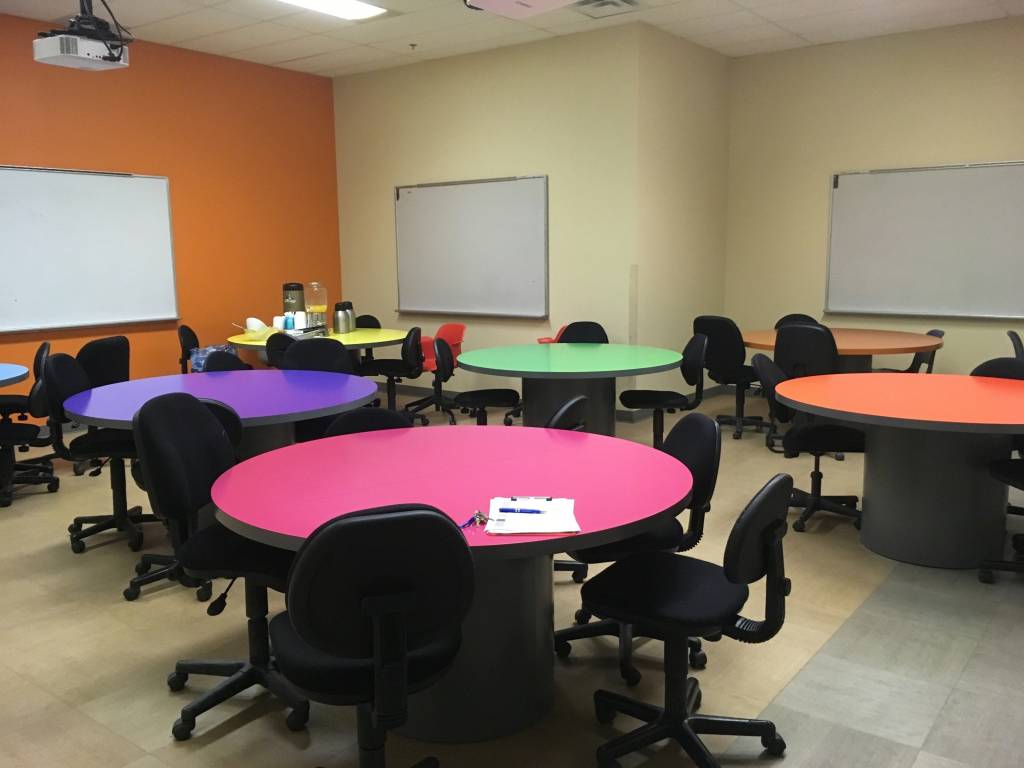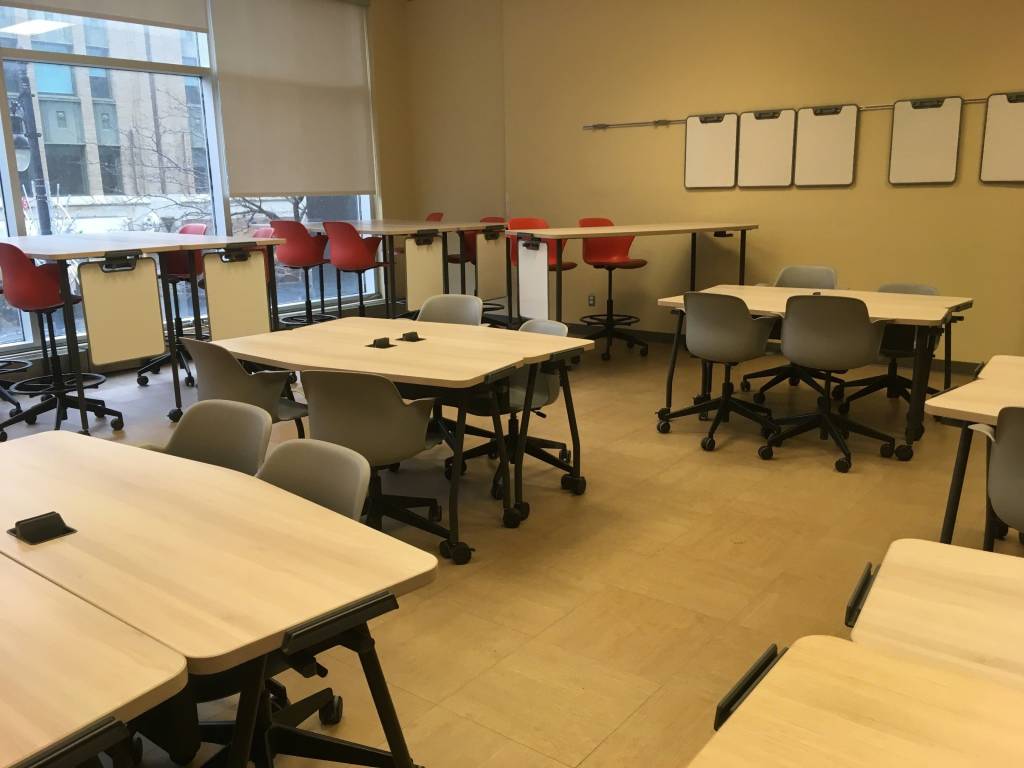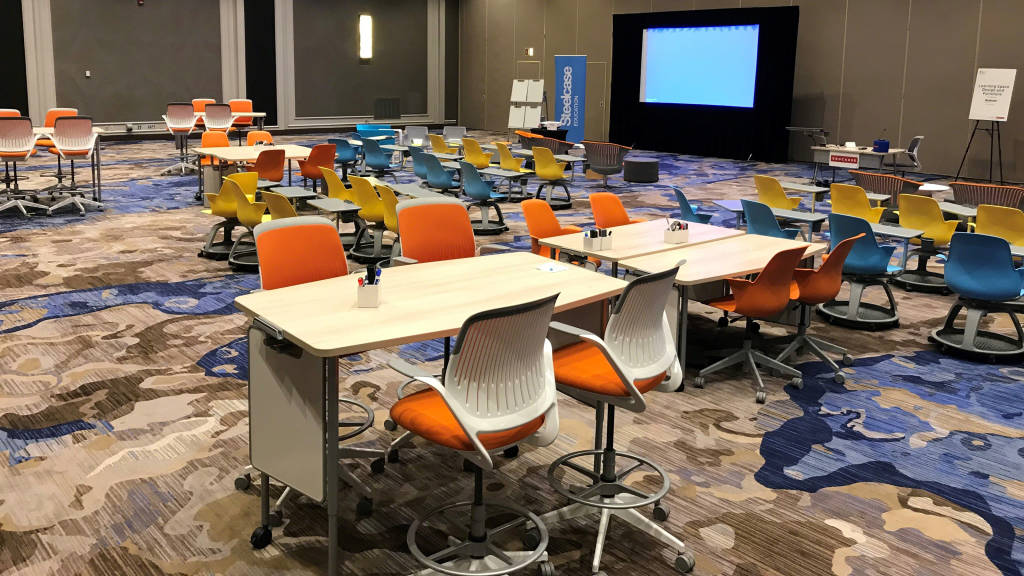Active Learning Fosters Soft Skills in Students
LaSalle College is teaching students collaboration, creativity and communication
In a recent report by Oxford Economics, employers listed the qualities they desire most in future employees. What made the top of the list? It wasn’t programming, software knowledge or technical capabilities. It was soft skills. Things like interpersonal and communication skills, teamwork and empathy, combating ambiguity and overcoming obstacles are the skills that employers today deem most hirable and most important in the workforce (Gallup Business Journal).
At LaSalle College in Montréal, Québec, educators recorded a measurable increase in the development of students’ soft skills, including communication and teamwork, after implementing an active learning initiative, classroom and tools on their campus. At the Educause Learning Initiative (ELI) annual meeting in January 2018, Jolyanne Le Duc, Pedagogical Support Coordinator, and Mathieu Lépine, Assistant Dean, from LaSalle College shared their research and findings including the impact on students across campus.
An Active Learning Journey
LaSalle’s active learning efforts started in 2011, when educators opened their first non-traditional classroom called their “collaborative room.”
“It had a lot of color,” said Lépine. “That was the beginning of the journey for us.”
Around this time, they also formed an active learning community on campus which included programs and workshops for teachers to learn about student-centered pedagogy as well as an online forum for teachers to share active learning activities and tips they were trying.
While having a more colorful classroom was a good start, it wasn’t enough. LaSalle wanted more spaces designed to help students collaborate. In 2016, they submitted a proposal for the Steelcase Education Active Learning Center Grant.
“It was a way for us to improve the tools and activities in our active learning community,” said Lépine. “In the proposal, we expressed that we really wanted to change from a teacher-centered approach to a student-centered approach.”
After being selected as one of 13 recipients from more than 800 applicants, LaSalle embarked on an initiative to evolve their campus’ active learning efforts and generate original active learning research.


Project Alignment
In addition to their collaborative room, LaSalle added a true active learning space equipped with Steelcase Education furniture and tools. Prior to the 2016 academic year, the administration, pedagogical counselors and teachers gathered together to determine objectives for their space and establish a plan to measure the impact on the development of soft skills and teacher motivation and engagement.
“We aim to train students in their field of study, but also we train them to become responsible citizens with work-related soft skills,” says Le Duc.
Using surveys provided by Steelcase Education as well as frequent roundtable conversations with students and teachers, LaSalle collected a year’s worth of valuable, qualitative feedback that told a powerful story.
Positive Outcomes
Students reported feeling more at ease in the Active Learning Center classroom and teacher feedback suggested the same. Teachers said they felt more relaxed in the spacious, bright active learning room which encouraged them to try new things. However, the most exciting result was the positive impact on students’ soft skills.
“Soft skills are competencies that you use in the workplace. For example, teamwork or communication, skills that are not necessarily tangible.” says Lépine
Measurable positive change was seen in student communication, creativity, collaboration and critical thinking. Students appreciated their teachers guiding activities that fostered teamwork. They confessed to feeling more familiar with everyone in the classroom because they could look at each other instead of being stuck in rows and staring at the backs of their heads. Teachers said students started showing a genuine interest in being in class and typically timid students were far more engaged.

Students called the Verb whiteboards “stress-reducers.” It was easier for them to present their ideas from anywhere in the classroom with a whiteboard, than to stand alone at the front of the class using the big whiteboard on the wall. The Verb whiteboards also created a culture of transparency where students could see other groups’ ideas and build off of them.
Finally, the space made it easier to focus. Students said it was easier to concentrate throughout class because they had the freedom to move around or to get up and stand at a high table if they felt tired. Due to the increase in teamwork and group activities, they felt more obligated to maintain focus.
“After a year, we have good data.” said Lépine. “But, we want to get more data.”
Onward and Upward
After relaying their findings to the administration, LaSalle added four new active learning rooms and continue to improve teacher training and available resources. While sharing this research at ELI, Lépine and Le Duc led attendees through an exercise similar to one they use in their teacher training on campus. They asked educators in the room to collaborate on this question: How would you use what is in this room to teach students soft skills?
After only seven minutes, attendees shared their ideas. They were impressed at the countless activities and applications they could think of in just seven minutes. One attendee shared her appreciation for how the seating configurations facilitated both formal and informal teamwork. From coffee table casual, to desk-to-desk formal, she noticed how various group formations were able to happen naturally because of the furniture in the space.
Another group of attendees addressed the issue that employers today see a lack of ownership in learners. Instead of waiting for someone to tell them what to do, or complaining about how other people structure things, employers need graduates who have a sense of responsibility. Lépine contended this relates to the development of soft skills and students’ ability to use them in the working world.
LeDuc suggested taking advantage of the flexible furniture by making students responsible for designing the learning space on a daily basis. By allowing students to own the configuration of the room and challenging them to maximize learning outcomes, they develop initiative.
LaSalle is continually exploring new strategies to leverage active learning practices and tools on campus. With a growing active learning community, now roughly 80 teachers, and administrators on their side, their journey has just begun.
Learn more about how the educational environment can support active learning.



